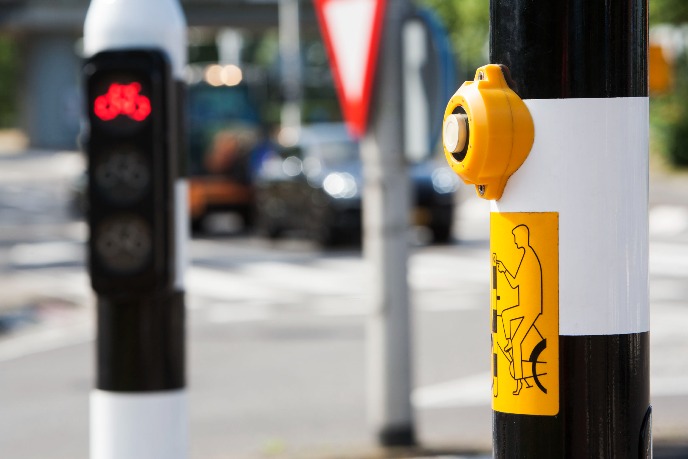Safe, independent cycling for the visually impaired
Can visually impaired people cycle safely on their own? Bart Jelijs argues that guidelines for that purpose should not solely be based on the nature or extent of a visual impairment, because that would unnecessarily exclude many visually impaired people. In addition, not only are environmental conditions, such as infrastructure and traffic conditions, important in this respect, but also self-confidence.
Many people cycle daily, for example to go to school, work, or the supermarket. This form of exercise is also becoming increasingly relevant. In the first place, people nowadays are much more inclined to carry on cycling later in life, for example elderly people who use electric bikes. In the second place, riding a bicycle is strongly encouraged, partly because of climate, spatial, and health benefits. And finally, being visually impaired will become more common in the near future, due to an ageing population. Many eye conditions occur or develop at an older age.
It has been established that there are people with serious, permanent impairments in visual acuity or visual field who cycle independently. Yet some people with milder visual impairments have stopped riding a bike altogether. How well someone can see is not always a decisive factor for the use of a bicycle: other circumstances also play a role. The purpose of the study was to find out what these conditions are, what difficulties visually impaired cyclists experience, and how they adapt their behaviour in order to be able to cycle. More knowledge about this will help other visually impaired people to ride a bike, or even learn how to, and thus optimize their mobility.
Jelijs' research shows that for using a bicycle, not only are environmental conditions such as infrastructure and traffic important, but also self-confidence. Difficulties experienced by many visually impaired cyclists have to do with light-dark changes, intersections without traffic lights, and the poor visibility of others. Visually impaired cyclists are more likely to cycle slower than their visually capable peers, possibly in order to process visual information. There is no evidence that visually impaired cyclists take different, safer routes. An important general finding is that guidelines for cycling independently should not be based solely on the nature or extent of the visual impairment, as this unnecessarily excludes many visually impaired people from cycling.

More news
-
23 October 2025
Nine UG researchers awarded Vidi grant
-
07 October 2025
What art does to us
